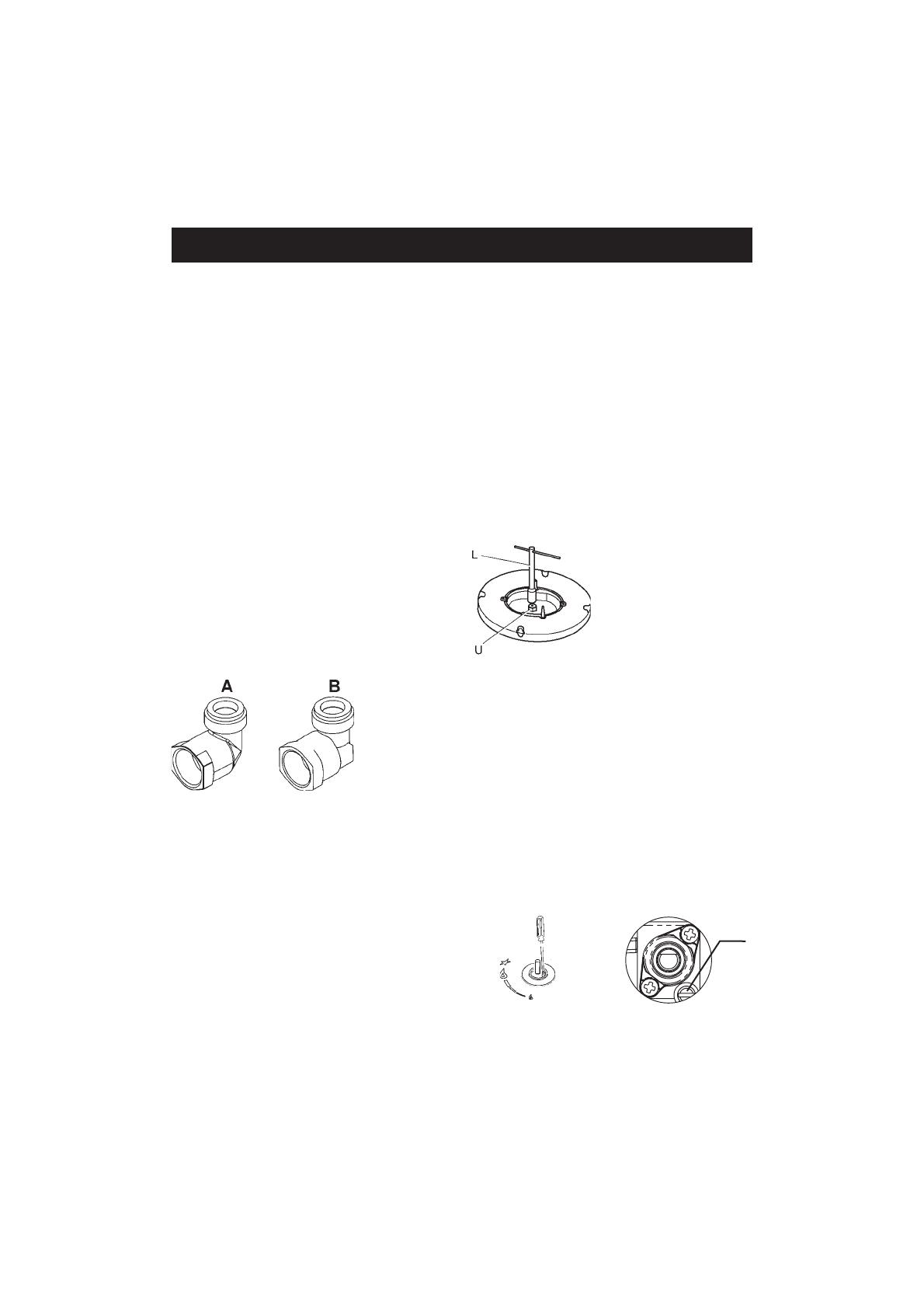
7
UTASÍTÁSOK A SZERELė SZÁMÁRA
7. ábra
8. ábra
kivezetĘ egységgel, ezért a füstĘk kivezetésérĘl egy
szagelszívóval vagy elektromos ventilátorral kell
gondoskodni, mely minden alkalommal mĦködésbe
lép, amikor a készüléket használja.
A helyiségnek, melyben a készüléket felszereli,
természetes légárammal kell rendelkeznie a gáz
szabályos égéséhez és a helyiség szellĘzéséhez; a
szükséges levegĘ mennyiség nem lehet 20 m
3
-nél
kevesebb.
A légáramot a helyiséget a kültérrel összekötĘ
falon tartósan kialakított nyílásokon keresztül kell
biztosítani.
A szellĘzés egy szomszédos helyiségen keresztül
is történhet, ez esetben a hatályos elĘírások
rendelkezéseit kell követni.
A nyílásoknak legalább 200 cm
2
-es keresztmetszettel
kell rendelkezniük.
Gáz csatlakoztatás
GyĘzĘdjön meg arról, hogy a készülék a rendelkezésre
álló gáz típusának megfelelĘen legyen beállítva, lásd
a készülék alatti cimkét. A "gáztípus változtatás és
szabályozás" fejezet alatt feltüntetett útmutatásokat
kövesse ha esetleg más gáztípust kell használnia.
A készüléket merev fém csövek használatával kell a
gázhálózatra csatlakoztatni a hatályos elĘírásoknak
megfelelĘen, vagy megszakítás nélküli csĘfalú acél
flexibilis csövekkel
a hatályos
elĘ írásoknak
megfelelĘen.
Néhány modell
két csatlakozó
darabbal
rendelkezik:
egy hengeres A, és egy kúpos B (7. ábra). Válassza
ki a megfelelĘ csatlakozó darabot a beszerelés
országától függĘen.
A csatlakoztatás nem lehet a gázrámpára nézve
megterhelĘ.
A szerelés végén ellenĘrizze a csatlakoztatások
tömörségét szappanos oldat segítségével.
Elektromos csatlakoztatás
Az elektromos hálózatra történĘ csatlakoztatást
szakembernek kell végeznie a hatályos elĘírásoknak
megfelelĘen.
Az elektromos hálózat feszültségének meg kell
felelnie a készülék alatt lévĘ cimkén feltüntetett
értéknek. EllenĘrizze, hogy az elektromos hálózat
rendelkezzen egy hatékony földelĘ csatlakozással
a törvényi elĘírásoknak és rendelkezéseknek
megfelelĘen. A földelés kötelezĘ.
Ha a készülék nem rendelkezik dugóval,
csatlakoztasson a tápvezetékhez egy szabványosított
dugót.
A csatlakoztatást közvetlenül az elektromos hálózatra
is lehet eszközölni egy omnipoláris kapcsoló
beiktatásával, mely az érintkezĘk között legalább 3
mm-es nyitásközzel rendelkezik.
GÁZTÍPUS VÁLTOZTATÁS ÉS SZABÁLYOZÁSOK
Fúvóka csere
Ha a készülék a rendelkezésre állótól eltérĘ típusú
gázra van beállítva, ki kell cserélni az égĘfejek
fúvókáit.
A cserélendĘ fúvókákat az alábbiakban feltüntetett
"mĦszaki jellemzĘk" táblázatnak megfelelĘen kell
kiválasztani.
Az alábbiaknak megfelelĘen járjon el:
Távolítsa el a rácsokat és
az égĘfejeket.
Egy egyenes kulccsal L
csavarozza ki a fúvókát U
(8. ábra) és cserélje ki az
annak megfelelĘvel.
Rögzítse erĘsen a fúvókát.
Az égĘfejek szabályozása
A minimális takarék lángot megfelelĘen kell beállítani,
azaz a lángnak mindig égve kell maradnia még akkor
is, ha a maximális fokozatú lángról hirtelen a minimális
tartalék lángra csavarja a kezelĘgombot.
Ha ez nem történik meg, a minimális gázadagolást az
alábbiak szerint kell beszabályozni:
Gyújtsa meg az égĘfejet;
Csavarja el a csapot a minimum (takarék láng)
állásig;
Húzza le a kezelĘgombot a csap rúdjáról;
Helyezzen egy lapos csavarhúzót C a kapcsolótábla
nyílásába (9. ábra) és fordítsa el a by-pass csavart
(9/A ábra) a minimális gázadagolás (takarék láng)
megfelelĘ beállításáig.
9. ábra 9/A. ábra
A G30 gázzal mĦködĘ égĘfejeknél a by-pass
csavart teljesen be kell csavarozni.
-
-
-
-
-
-
-
V



























































































